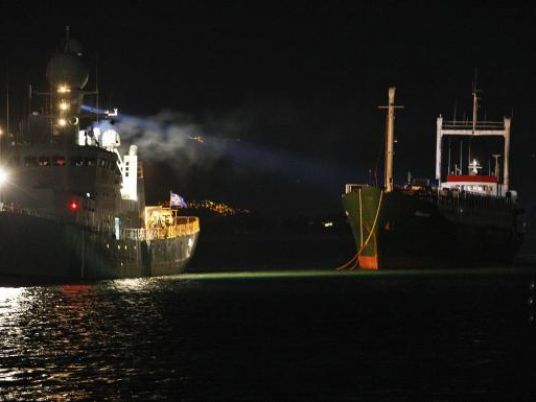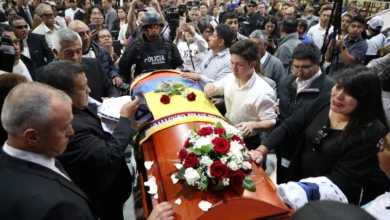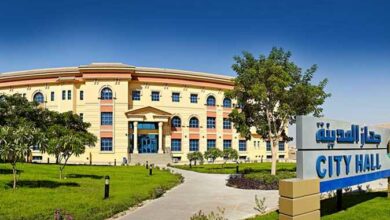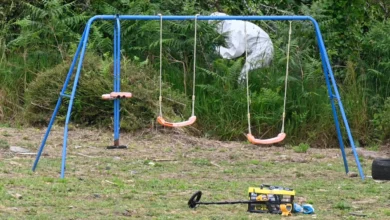
Italian investigators are piecing together a picture of beatings and abuse that hundreds of Africans and Bangladeshis suffered before setting sail from Libya to Italy, only to drown late on Saturday in one of the worst migrant shipwrecks ever in the Mediterranean.
Among the testimonies prosecutors have gathered from 28 survivors are recollections of several people being beaten to death by people-traffickers in a Tripoli farmhouse as they waited to set sail. One man was killed when he stood up on a rubber dinghy without permission, the prosecutors said.
More than 700 people, most locked into the hold and lower deck of a 20-metre-long fishing boat, are believed to have drowned instantly when the overloaded vessel capsized after colliding with a Portuguese merchant ship coming to its aid some 70 nautical miles off the coast of Libya.
The prosecutors in Catania are building a case against a 27-year-old Tunisian who they suspect sunk the boat by deliberately colliding it three times against the merchant ship. A judge is due to decide on Friday whether to confirm the arrest. Massimo Ferrante, a lawyer representing the Tunisian, said his client says he was just a passenger on the ship, not the captain.
The weekend’s tragedy prompted an emergency meeting earlier on Thursday of European leaders who vowed to crack down on the people-smugglers behind many of the treacherous sea voyages.
Trafficking networks have flourished as hundreds of thousands of migrants fleeing war or poverty in Africa and the Middle East are willing to take desperate measures to reach Europe.
The smugglers process their passengers not only from northern Africa into Italy, but also to other parts of Europe — serving as “tour operators” for clandestine migrants, according to Palermo prosecutor Francesco Lo Voi, who recently ordered the arrest of 24 suspected smugglers. [ID:nL5N0XK54J]
According to the testimony of the weekend shipwreck’s survivors, the migrants who set sail from Libya had been held for a month in a farmhouse near Tripoli. The hopeful travellers came from several African countries, including Mali, Somalia, Eritrea, Gambia, Sierra Leone, Niger, Nigeria, Sudan and Senegal. There were also many people from Bangladesh. For all, the farmhouse in Libya was just one stop along a much longer journey.
Several survivors told investigators that the farm was under the control of armed men in uniform. Before they were all transferred by truck to the shore, one survivor said he had witnessed money being handed over prior to departure to Libyan personnel described by the witness as “police”.
Prosecutors say that the 1,000-1,200 people originally expected to leave on the fishing boat paid from between 1,000-1,500 Libyan dinars ($840-1,260) to up to $7,000 for the voyage to Italy.
When the group arrived at the shore, they were gradually transferred via rubber dinghies onto the bigger fishing boat — where a captain was guiding the operations using a Thuraya satellite phone, prosecutors said.
But the traffickers found it impossible to squeeze more than 800 into the boat, according to testimony given by one 16-year-old Somali survivor to international organisation Save the Children. Those who protested that they couldn’t swim were silenced with threats. When one man stood up in the rubber dinghy without permission, he was killed and his body thrown overboard.
The majority of the other passengers would drown hours later when the fishing boat collided against the merchant ship. Survivors said the boat capsized after passengers all shifted to one side during the collisions.
Prosecutors said true number of people aboard the ship may never be known unless the wreck is recovered, but they say the survivors all point to more than 750 people aboard.
For the 16-year-old boy from Somalia, whose name Save The Children declined to make public, the Mediterranean crossing came after a nine-month ordeal. According to the organisation’s Sarah Tyler, the boy set out in the summer of 2014, crossing the desert into Sudan with money paid to traffickers by his parents, who hoped their son would end with an aunt in Norway.
He was held prisoner for nine months on the Libyan border while his parents came up with the money to pay for the next stage of the trip. Eventually, he was taken across the border into Libya in a truck and given the number of a contact to call in Tripoli.
Now, the boy is in a migrant holding centre outside Catania. Tyler says he still plans to go to Norway — using traffickers, if necessary




